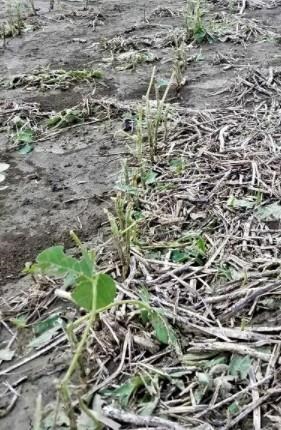By Alexander Lindsey and Peter Thomison et.al
Storms over the last few weeks resulted in lodging and leaf damage in crop fields. It is likely the crops will rebound from these stresses and should experience minimal yield loss from these events (5-10%) if the season progresses well. Scouting for regrowth should be conducted to ensure fields are recovering.
When 50% defoliation occurred in corn at the V8 growth stage or earlier, yield losses compared to non-defoliated control ranged from 2-14% (7% average) in recent work. In general, these values match the data from OSU’s bulletin 827 – Corn, Soybeans, Wheat, and Forages Field Guide. If root lodging (root mass is partially removed from the soil with minimal stalk damage) occurs before grain fill, plants usually recover at least partly by "kneeing up." This response results in the characteristic gooseneck bend in the lower stalk with brace roots providing above-ground support. If this stalk bending takes place before pollination, there may be little effect on yield. Severe root lodging that occurred at the V10 growth stage reduced yield compared to non-lodged controls by 5% in recent work from Ohio but increased to 22% when lodged at the V14 growth stage. The yield reductions in our work come in part from severe lodging (stalk angles within 20° of the soil surface) and will likely be less if stalk angles are greater than 20°; past work with less severe lodging resulted in 5-15% yield reduction at the V13-15 growth stages (Carter and Hudelson 1988). As growth stages progress into the reproductive stages, yield losses are more likely to increase if the damage is experienced.
